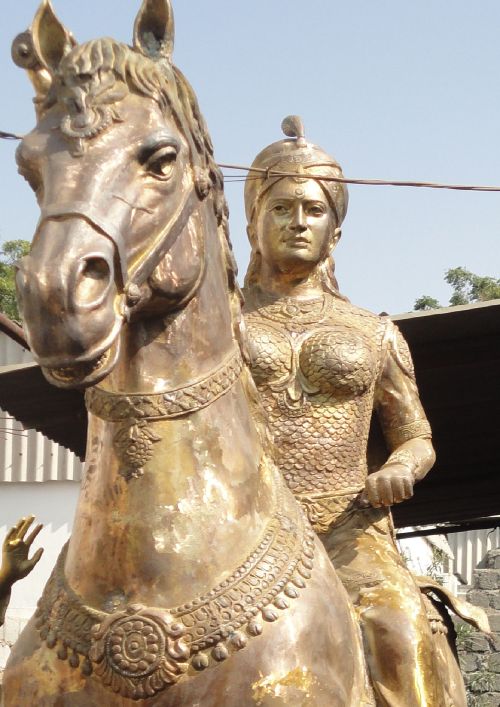#rudrama devi
Rudrama Devi (1245-1289) was a Warrior Queen of the Kakatiya dynasty in the Deccan Plateau of Southern India.
Rudrama Devi rose to power in 1259 during her early teens when she was appointed co-regent to jointly rule alongside her father, King Ganapati. While Ganapati had no sons, he gave her the male name of Rudra Deva and formally declared her to be his male heir, an image which she did nothing to deter as she dressed in male clothes. She married Veerabadra, a prince of Nidadavolu, with whom she had two female children, but he suffered an early death.
The first few years of Rudrama’s conjoined rule with her father were marred by a Pandya invasion led by Jatavarman Sundara Pandyan I. While the invasion was eventually repelled, the Kakatiyas suffered a number of significant defeats and the kingdom was left in a weakened state. As a result of these failings her father withdrew from public life while passing control to Rudrama, and on his death in 1269 she was officially crowned as Rani (Queen). A number of noblemen, possibly including her own step-brothers, refused to submit to a woman’s authority and rose up in rebellion against her. However Rudrama rallied an army with those nobles and chiefs still loyal to her and successfully crushed the rebellion.
Having secured her kingdom Rudrama spent the rest of her rule defending it from external threats. The Kakatiya were one of four major powers in Southern India who were frequently at war with each other. The Yadava king Maha Deva launched a sustained invasion on the Kakatiya from 1268 to 1270, culminating in a siege of the Kakatiya capital of Orugallu (now Warangal). After 15 days of fighting, an attack led by Rudrama routed the Yadavas and she pursued them in a long retreat back to their own territory during which many Yadavas were captured. Soundly defeated, Maha Deva was forced to pay an enormous ransom for the release of his soldiers. A later invasion by the Odias was also defeated by Rudrama’s generals.
While adept at warfare, Rudrama was also known to have been an effective administrator and when Orugallu was visited by Marco Polo he described her as a lady of discretion who ruled with justice and equity. She also completed work on the Orugallu Fort, adding a second wall and a moat to the structure, which protected the city against numerous future sieges.
In 1280 Rudrama passed the mantle of leadership on to her grandson, Prataprudra, as she was growing old and had no male children of her own. However in 1285 a new threat arose in the form of the Kayastha Chief, Amba Deva, who had allied with the Pandyas and Yadavas to destroy the Kakatiya empire. Though elderly, Rudrama led an army to meet this three-pronged attack head-on, but was killed in the ensuing battle. The Katakiya empire would crumble over the following years, however Rudrama Devi’s legacy is still well remembered in Southern India.
Post link

